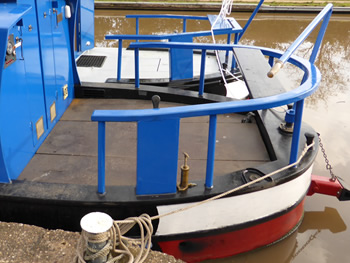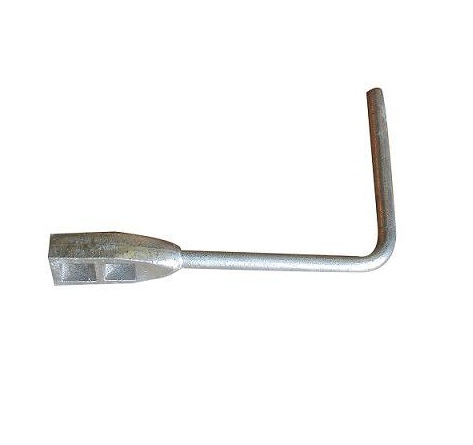Mooring a NARROW BOAT
A Narrow Boating Article.
Deciding where to moor and for how long is one of the greatest joys of a narrow boating holiday.
On a narrow boating holiday you are your own tour guide and you have the freedom to decide when and where you moor. You can moor up along a canal side pub for lunch or in the middle of the beautiful countryside miles from anywhere for a picnic.
You can moor in the heart of a vibrant city full of history and culture or in a quaint canal side village. You can moor near to a state of the art science museum or at a ancient ruin or castle steeped in legend. You will be spoilt for choice as you can moor in stretches of beautiful countryside or picturesque towns and villages.
 HOW TO MOOR
HOW TO MOOR
On some parts of the canal you will find designated mooring rings or bollards so you can just use your ropes and secure the boat. Mooring pegs or pins are usually provided for you when there are no mooring points.
STEP BY STEP GUIDE TO MOORING
Decide on a suitable place to moor.
Get your equipment and crew ready in good time.
Slow down in good time - there are no brakes on a canal boat.
Head towards the canal bank at about a 30 degree angle.
When you get to approximately five or six feet away from the canal bank straighten up.
Put the canal boat in reverse to slow down and with any luck you will come to a stop in a parallel position to the bank. This ought to be close enough for one or more of your crew to step off the canal boat.
They can either carry the ropes with them, making sure there’s plenty of slack and that one end is fixed to the boat, or the rope can be thrown to them when they are on the bank.
To keep your boat secure, you will need to tie it to the bank with a rope from both the front and the back (if mooring on a river fix your upstream rope first).
If there are no bollards or mooring rings, use mooring stakes or pins (usually provided on the boat). If using pins make sure you knock them in to about three-quarters their length so that they are firm.
 Mooring Equipment
Mooring Equipment
Mooring Pins (pegs) - To help secure the rope and they do look just like a giant pin.
Lump hammer - Used to hammer the mooring pegs/pins in to the ground.
Mooring hooks – These look like a large safety pin.
Mooring rope - To enable the crew member to help pull the boat to the side of the bank.
Don’t moor
In lock approaches or in lock flights.
Near swing or lift bridges.
Near weirs.
Near sharp bends or near to blind spots.
In or opposite turning points or near to marina entrances.
At junctions.
To the bank on a tidal river – as you may find your canal boat dangling from the ropes when the tide goes out.
In stretches marked out for an angling match and try to stay 50 feet away from established angling spots.
In a way that it makes it awkward or difficult for other canal users to manoeuvre or to pass you.
At water points – unless filling up your tank.
On private property.
Please Don't
Let the rope cross the towpath.
Jump on and off the boat. Your crew should step ashore.
Use your boat’s centre line as a mooring rope.
Please do
Adhere to any mooring notices.
When moored for the night remember your neighbours and keep noise level to a minimum.
Leave room for other boats to tie up.
Check that you are not a hazard to other boats or to people using the bank.
Put something light coloured, a carrier bag is ideal, on top of the pins, if you are using them, so walkers and cyclists can see them clearly.
Make sure you know how to use your ropes properly. Keep them coiled, free of knots and don’t drop them in the water, especially near the propeller.
And remember
The canals and towpaths are big enough for everyone to enjoy and it costs nothing to be polite and considerate.
If you want to know more about the etiquette of mooring please read the British Waterways Boaters Guide.
Before your holiday it is advisable to understand the different types of moorings
 TYPES OF MOORINGS
TYPES OF MOORINGS
A Visitor mooring - A length of bank that has been designated for periods of less than 14 days. They tend to be at popular locations and time limits are designed to enable as many different boaters as possible to enjoy the use of the mooring. The length of time you are allowed to moor at any one time will be clearly signed. Please respect the time limits and any other rules which may be displayed.
Tow Path/casual mooring - This means mooring up along the towpath during the course of a journey. It may be at a visitor mooring, which will be subject to the time limits displayed, or anywhere else along the towpath. The maximum period that you can stay, where not subject to a mooring time limit, in the same place along the towpath is for 14 days.
Service mooring - A location adjacent to towpath such as a water point, sewage or refuse disposal points. These are for use only while you are using the facilities and time limits are signed.
Residential mooring - A long-term mooring which has the local authority’s permission for it to be used as the occupant’s sole or primary residence. Residential moorings will be clearly marked.
Other types of mooring and mooring restrictions you may encounter.
Short term mooring permits - Marina and moorings operators may offer short term agreements, normally by the month, for people wanting a mooring for a few weeks at a time. Winter mooring permits are popular with continuous cruisers who may prefer not to move so much during bad weather or when prevented from doing so.
Leisure mooring - A long-term mooring where a boat is used for leisure or recreational purposes.
Trade mooring - Moorings assigned to specially licensed operators of commercial boats such as day trip boat or restaurant boats.
Home mooring, permanent mooring, long term mooring – Refers to the place or marina where the canal boat is moored when it's not is use.
Mooring restrictions - You may see temporary or permanent Canal & River Trust signs restricting use of a location for a mooring. This may have been put into place for a number of reasons such as a canal or boating event or maintenance works.